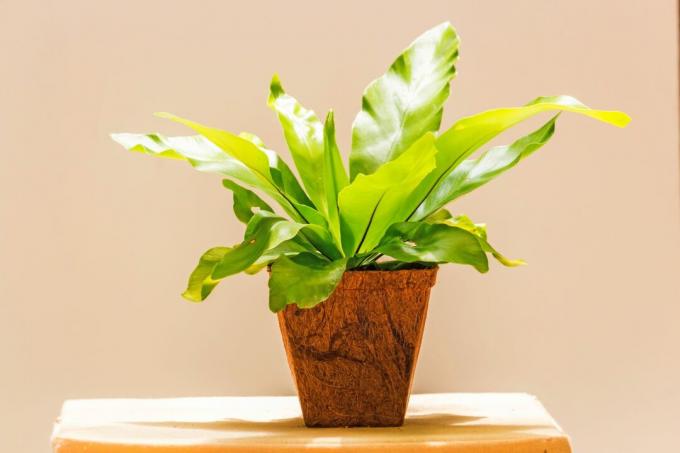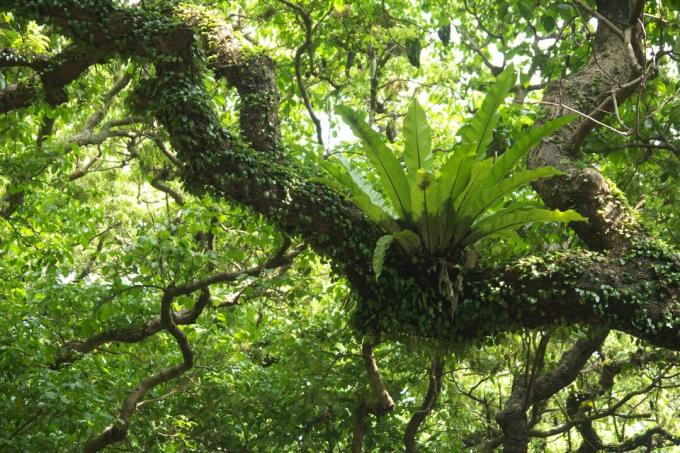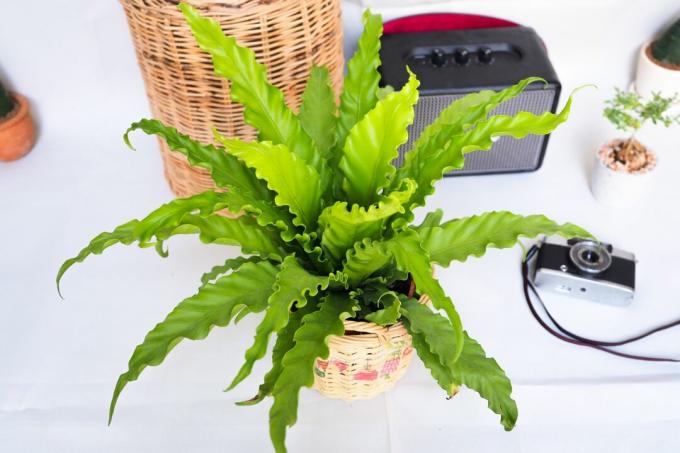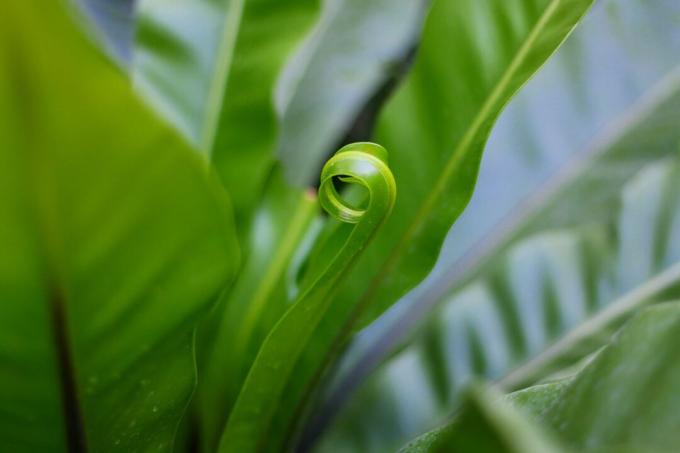The nest fern is a popular representative among houseplants. In this article you will find tips on the location and care of nest ferns as well as the most beautiful varieties for the apartment.

The nest fern (Asplenium nidus) brings the tropics into your home with its lush, green leaves. Would you like to know what to look out for when caring for nest ferns? We give you the most important tips and tricks about the location, care and choice of variety of the popular houseplant.
contents
- Nest fern: origin and properties
- The most beautiful nest fern varieties for the apartment
- Location and substrate for the nest fern
-
Nest fern care: You should pay attention to this
- Water nest fern, fertilize and cut
- Repot nest fern
- Is the nest fern poisonous?
Nest fern: origin and properties
The nest fern (Asplenium nidus) from the genus of spleen ferns (asplenium) belongs to the spleenwort family (Aspleniaceae) and is native to the rain forests of East Africa, Asia and Australia. The evergreen plant can also develop leaves up to one meter long in indoor culture. The leaves are slightly wavy and have a light green, shiny color. As the name suggests, the fern fronds form a kind of nest and are funnel-shaped. The arrangement of the leaves serves the plant as a collecting funnel for water and plant residues, which supply the fern with nutrients. In its natural environment, the nest fern grows epiphytically, i.e. sitting on trees - just like
orchids. Some species of amphibians can even find shelter in its leaves.
The most beautiful nest fern varieties for the apartment
In addition to the classic nest fern, there are also some interesting varieties that catch the eye with their strikingly shaped leaves.
Asplenium nidus 'crissie': This version of the nest fern impresses with its rather smooth leaf edges, which fray almost like a hand at the leaf tips. This property gives the leaves a very unusual look.

Asplenium nidus 'Crispy Wave': The leaves of this variety are particularly wavy. Since these nest ferns are reminiscent of a head of hair due to their growth form, one quickly thinks of a head of curls.

Asplenium nidus 'fimbriatum': With the leaf edges frayed all around, this nest fern bears a resemblance to carrot greens that sprout from the ground.
Asplenium nidus 'Osaka': In contrast to Asplenium nidus 'Crispy Wave' is not wavy in this variety, but only the edges are heavily curled.

Location and substrate for the nest fern
As an epiphyte in the crowns of tall trees, the nest fern usually grows in semi-shade and without contact with the ground. According to its natural, tropical habitat, the Fern as a houseplant be used.
The nest fern prefers a semi-shady, windless place because it does not tolerate direct sun, but still needs enough light to grow. A warm, humid climate is ideal, so the temperature should always be around 20 °C and sufficient humidity should be ensured.
Tip: To increase humidity, you can place a bowl of water on the heater or near the nest fern. Since the leaves are quite sensitive, you should avoid using a water sprayer.

High-quality potting soil such as ours is suitable as a substrate for the nest fern Plantura organic universal soil, which contains all the important nutrients for healthy growth. The soil is made from natural raw materials and is peat-free, making it particularly sustainable. Good drainage of the soil is important so that no water can form. To increase permeability, you can simply mix a little expanded clay or sand into the substrate. In addition, a layer of potsherds or gravel on the bottom of the pot helps water drain. Orchid soil that meets the requirements of the epiphytes is also suitable for the nest fern, but is not absolutely necessary.
Nest fern care: You should pay attention to this
Nest fern care is not very complex. If the plant is in an optimal location, only a few small things have to be considered.
Water nest fern, fertilize and cut
It is best to pour your nest fern directly into the substrate with low-lime, room-warm water. Rainwater is particularly suitable for the nest fern. The root ball should always be moist but not overwatered. As soon as the substrate dries slightly on the surface, you can water again.
Tip: In summer, the nest fern needs a lot of water. At this time you can also dip the plant with the root ball in a bucket of water from time to time so that the entire substrate can soak up water.

You only have to fertilize the nest fern a year after repotting, as the soil already contains many nutrients. From spring to autumn, half the dose of fertilizer should be added to the irrigation water about every three weeks. For example, our is a sustainable fertilizer variant Plantura organic indoor and green plant fertilizer which not only provides all essential nutrients, but also enriches soil life with the microorganisms it contains.
The nest fern does not require pruning. Only brown and dried leaves can be carefully removed.
Repot nest fern
Since the nest fern grows rather slowly, it is sufficient to repot it every two to three years in spring. The fresh substrate contains new nutrients and can therefore have a positive effect on growth. If the roots get too tight in the old pot, a slightly larger planter should be chosen.

Is the nest fern poisonous?
The nest fern is not poisonous to humans or pets. It can therefore be placed in any suitable place in the home without hesitation.
Would you like even more tropical flair in your home? the monstera - also known as window leaf - brings the jungle into your home. We give tips on location and care.


